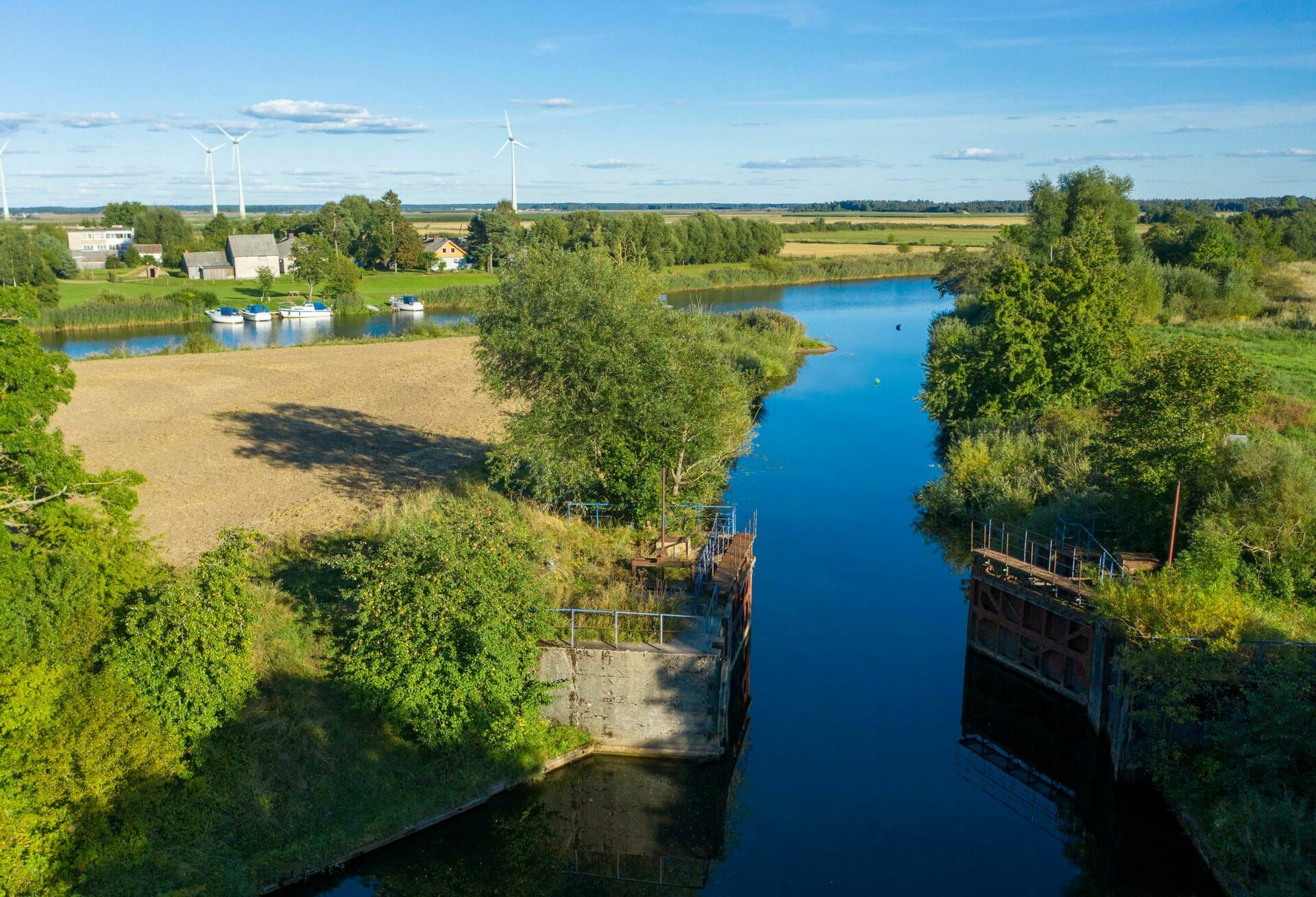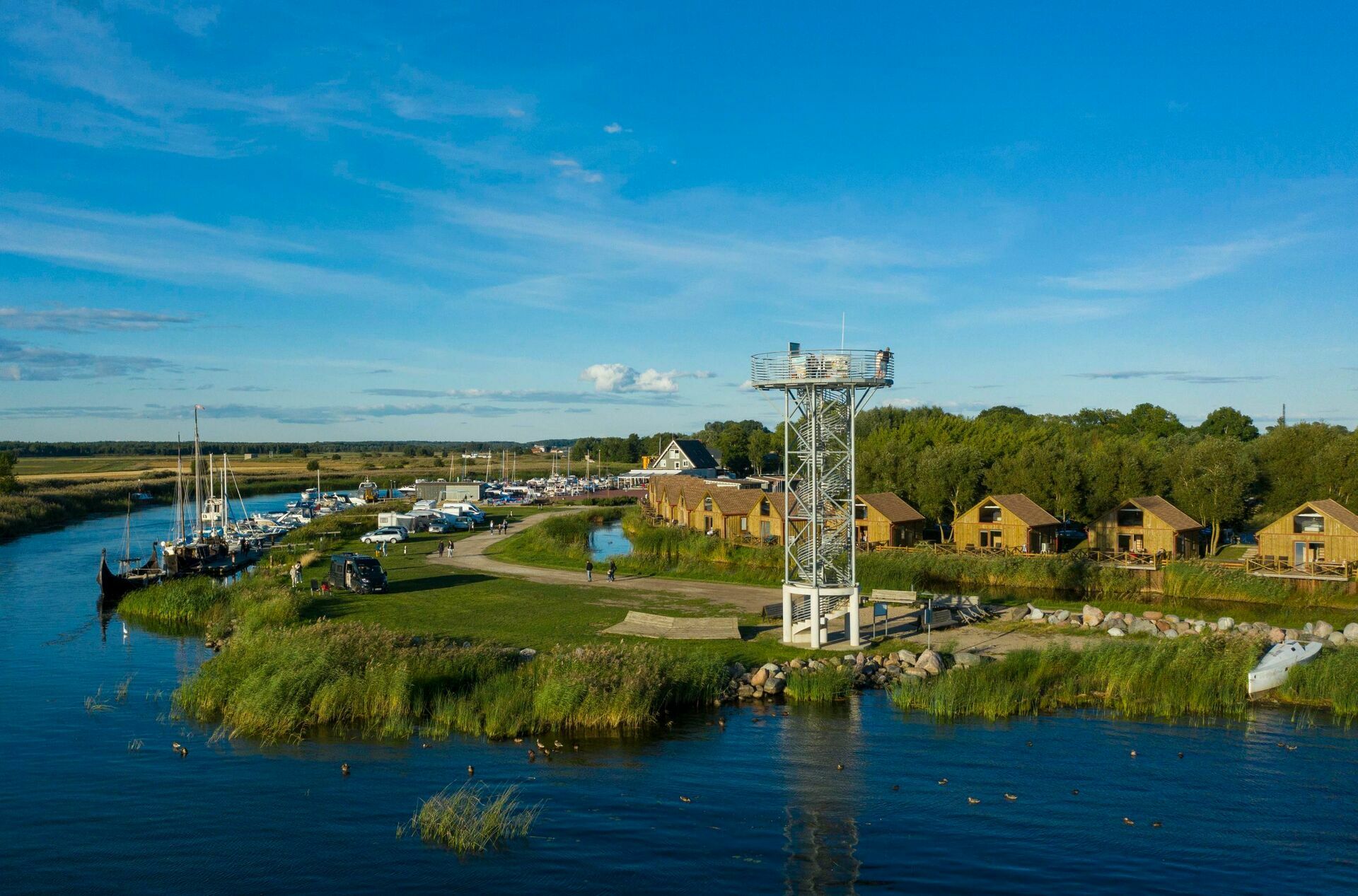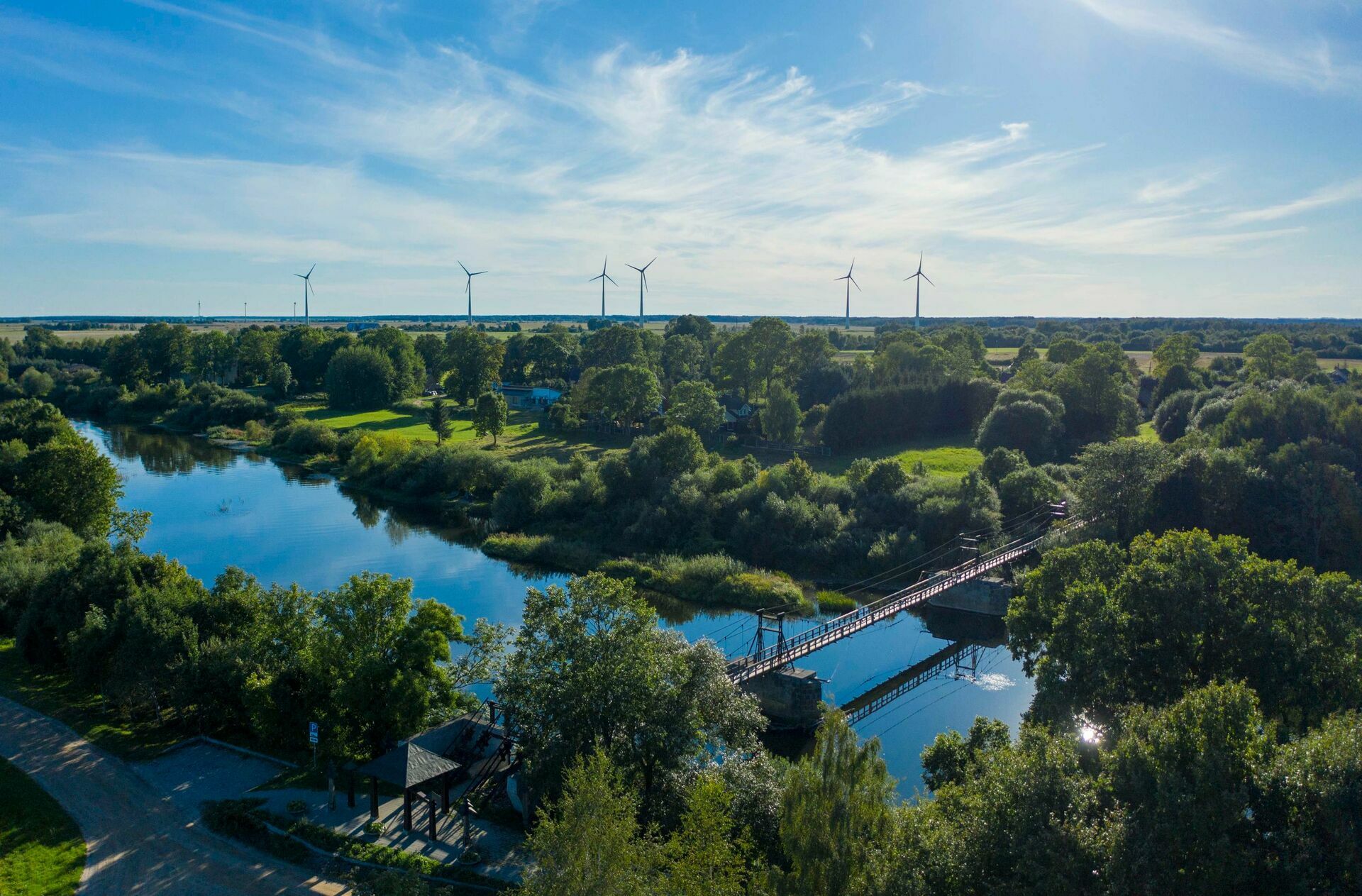The Curonians were a tribe of Balts who lived beside the Baltic Sea in the west of present-day Latvia and Lithuania from the seventh century to the first half of the 17th century. Although these warlike people engaged in agriculture, animal husbandry and crafts, it has to be admitted that the first image that comes to mind when you hear the name of the Curonians is sailing and waterways. And this really is fair, because the Curonians, like the Prussian Sambians, were particularly skilful and brave sailors, and also excellent fishermen.
Today the Klaipėda region, the former land of the Curonians, has plenty of interesting sights to visit. We want to tell you about the village of Dreverna and its surrounding area, so we are inviting you to take an impressive trip around the waterways of the Curonians.
Dreverna: a historic past and a modern way of life
We suggest you start your journey around the Curonian waterways at Dreverna, an old fishing village on the shore of the Curonian Lagoon, near the mouth of the River Dreverna. It was first mentioned in written sources as early as 1253. For almost 300 years there was a large fish market here, called Strykis, which attracted throngs of fishermen and traders. If it were possible to travel back in time to the village as it was then, the smell of fish and the sheer numbers of people would be quite overpowering.
Today, Dreverna is a perfect combination of the historical past and a modern lifestyle. For anyone who wants to go on a journey back through time, we recommend visiting the ethnographic homestead of Jonas Gižas, a famous builder of ships on the Curonian Lagoon, which was reconstructed in the 20th century. There you can see the exhibition ‘J. Gižas. Opening the Shipwright’s Chest’, where you will learn about the shipbuilding and fishing traditions of the region, and you can colour in the Dreverna weathervane, one of the most vivid and unique signs in the world. The homestead also organises the educational programme ‘The Way of Fish’, a culinary cruise on the Curonian Lagoon in an ancient Curonian boat. With food, education, the coastal region’s traditions, and the breeze and the billowing sails of the lagoon, it all makes for an unrivalled experience.
 We have already mentioned that Dreverna also offers a way of life that suits the rhythms of today. There is a modern port here for small ships, which offers a wide variety of services, from camping and modular rooms, to a restaurant with European cuisine, pleasure boats, spa services, a kite-flying school, and more. So if you have always dreamt of learning to fly a kite, or if you just want to relax on the shores of the Curonian Lagoon, Dreverna is a great place to go.
We have already mentioned that Dreverna also offers a way of life that suits the rhythms of today. There is a modern port here for small ships, which offers a wide variety of services, from camping and modular rooms, to a restaurant with European cuisine, pleasure boats, spa services, a kite-flying school, and more. So if you have always dreamt of learning to fly a kite, or if you just want to relax on the shores of the Curonian Lagoon, Dreverna is a great place to go.
Incidentally, if you are staying in Dreverna, do not forget to climb the 15-metre-high observation tower there. The breathtaking views of the Curonian Spit National Park, the Nagliai Nature Reserve, the area around Dreverna, the bobbing boats, and dozens of water kites, will leave you with very strong impressions.
The Kaiser Wilhelm Canal and its historic lock
The Kaiser Wilhelm Canal, which goes past Dreverna, is another interesting object that is well worth seeing with your own eyes. Constructed between 1863 and 1873, the canal was named after the Prussian Kaiser Friedrich Wilhelm I. Why was it built? The aim was to save shipping and people from the dangerous storms that arise on the Curonian Lagoon.
It is interesting that although the Kaiser Wilhelm Canal was dug by local residents, in later years French prisoners of war were brought in to speed up the work. The length of the canal is about 26 kilometres, the width is 28 to 30 metres, and the average depth is 1.7 metres. Today, the Kaiser Wilhelm Canal is an increasingly popular destination for water tourism, and it is also popular with anglers.
 If you visit the Kaiser Wilhelm Canal, do not forget to go (or swim) to its beginning, where you will see the Lankupiai lock, a unique historical object. It happens to be the only lock in Lithuania that has been declared a technical monument. It was built to make up for the big difference in water levels when the River Minija floods, and a ship would take about 45 minutes to pass through it. The Lankupiai lock is still sometimes used for its original purpose.
If you visit the Kaiser Wilhelm Canal, do not forget to go (or swim) to its beginning, where you will see the Lankupiai lock, a unique historical object. It happens to be the only lock in Lithuania that has been declared a technical monument. It was built to make up for the big difference in water levels when the River Minija floods, and a ship would take about 45 minutes to pass through it. The Lankupiai lock is still sometimes used for its original purpose.
The Lankupiai suspension bridge
There is another interesting object very close to the Lankupiai lock, and that is the Lankupiai suspension bridge, which connects the Klaipėda and Šilute districts over the River Minija. What is so special about this bridge? In 2017, it was included in the Lithuanian Book of Records. It turns out that the Lankupiai suspension bridge is the longest suspension bridge in the whole country. It is 130 metres long, and 1.4 metres wide. The metal bridge, covered with wooden planks, attracts more and more visitors every year, so if you are staying in this corner of Lithuania, do not forget to stop by and see it.



